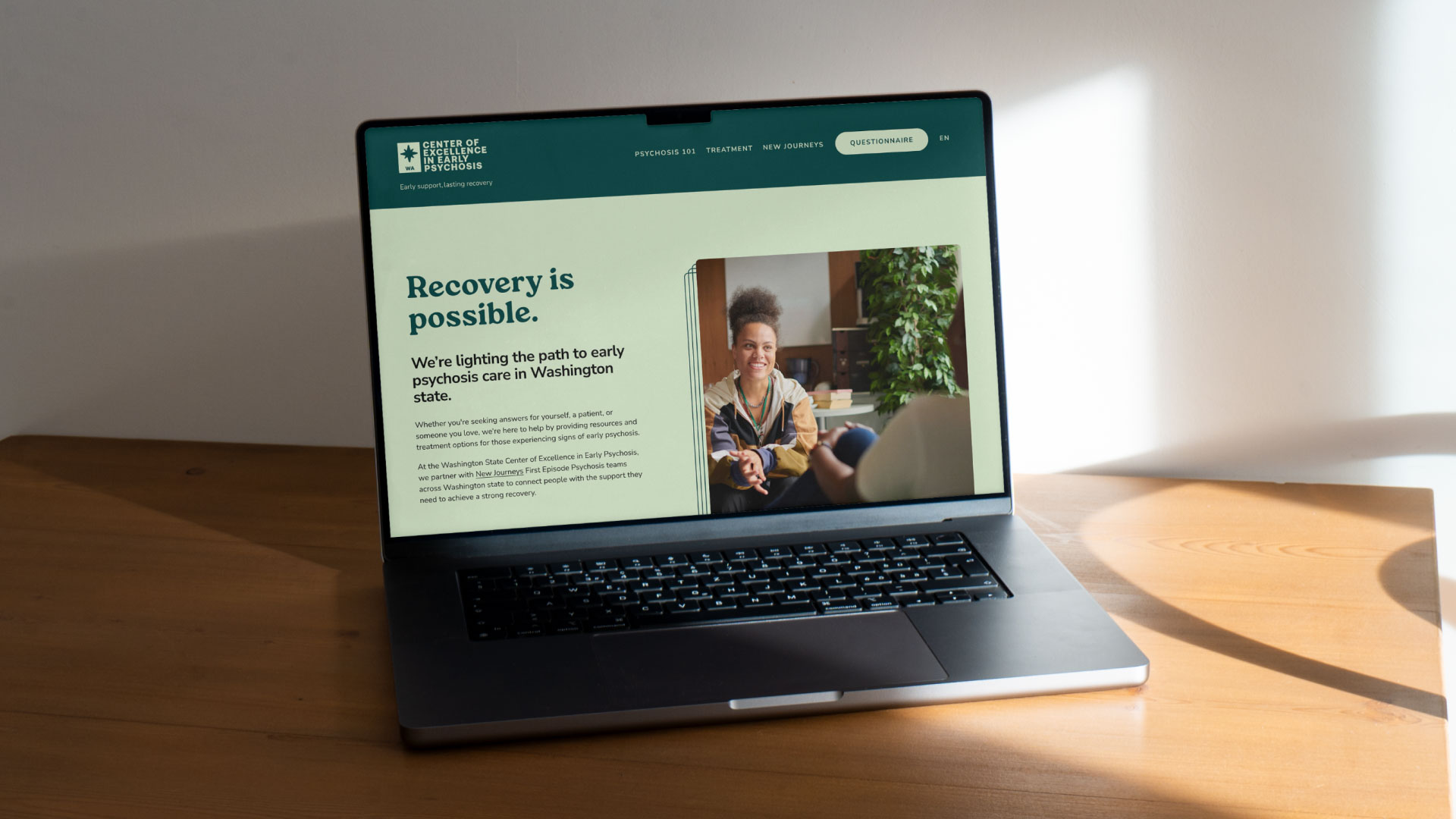

Creating a clear and compassionate path to early psychosis care across Washington state
Many young people experiencing early signs of psychosis don’t recognize what’s happening—or know where to turn. Families and caregivers often feel overwhelmed, and providers may lack the resources or training to make timely referrals. Stigma, misinformation, and systemic barriers only add to the confusion.
In partnership with the Central Assessment of Psychosis Service (CAPS)—the first statewide centralized assessment program for psychosis and psychosis-risk states in the country—we launched a public awareness campaign to increase understanding, reduce stigma, and guide people toward timely, evidence-based care. The goal: make it easier for patients, caregivers, and providers to recognize the signs of psychosis early and access treatment through New Journeys First Episode Psychosis teams.
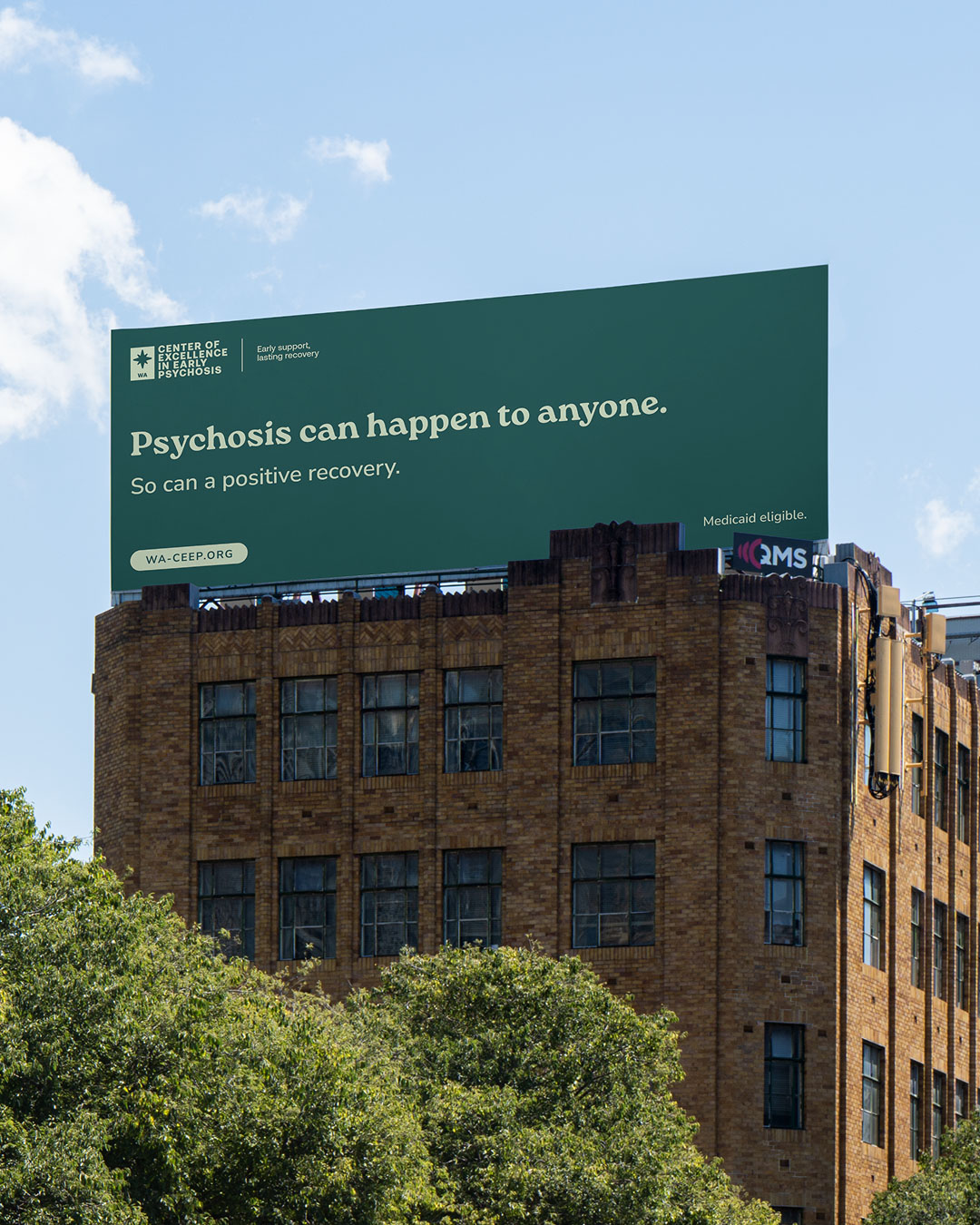

We created a hopeful, human-centered campaign that met people where they were—emotionally and digitally. Every piece of the strategy was built with clarity, care, and compassion.
Grounded in the belief that “You are not alone,” our messaging aimed to normalize symptoms, reduce fear, and emphasize recovery. We conducted lived experience interviews with individuals who had either experienced psychosis themselves or supported someone who had, ensuring the language reflected real stories, feelings, and needs.
We identified three primary audience groups: young adults, caregivers and family members, and healthcare providers. From there, we developed targeted messaging that would resonate with each group’s unique concerns, fears, and motivations. A multi-channel digital strategy ensured that each message would reach the right audience in the right place, at the right time—whether through search, social, or out-of-home placements.
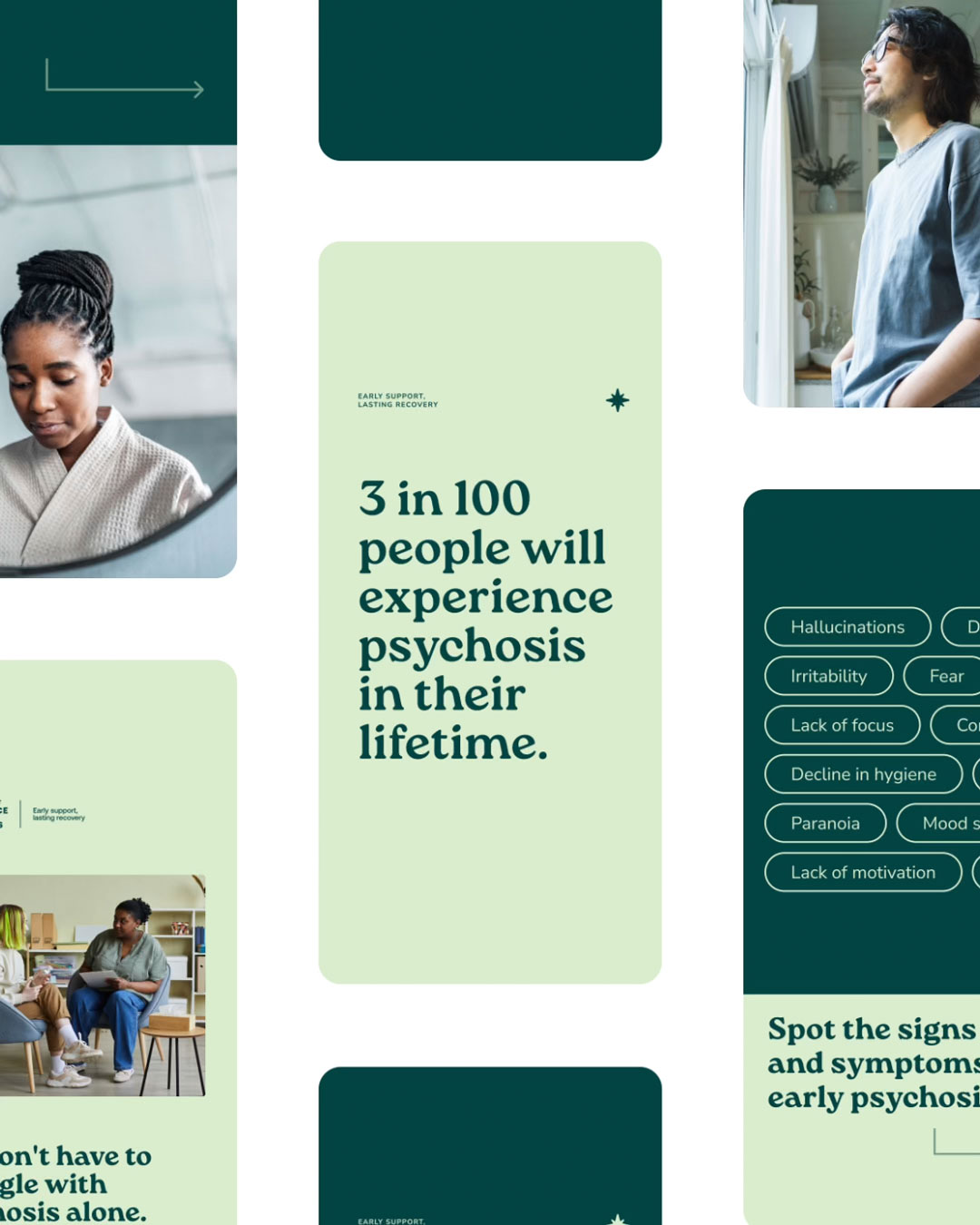
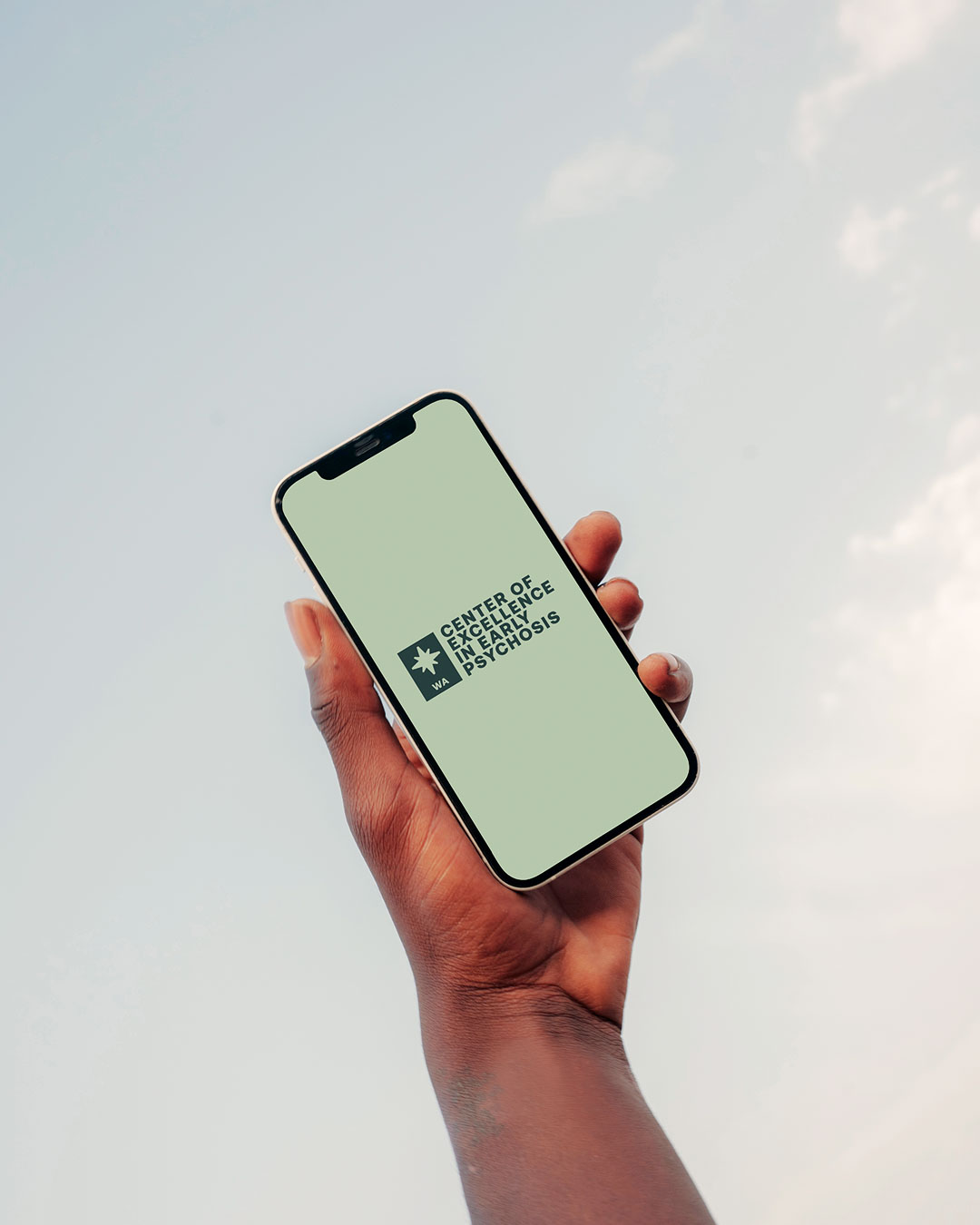
A four-month campaign launched across TikTok, Instagram, Reddit, and Google Search/Display, using creative tailored to young adults, families, and providers. All assets were available in English and Spanish, with a blend of paid and organic content driving traffic to a centralized microsite and psychosis screener.
At the center of the campaign was a clean, mobile-friendly microsite designed to make one thing simple: take the screener. Whether someone was experiencing symptoms themselves, supporting a loved one, or looking for answers, the site offered a calm and welcoming space to learn about psychosis and take a first step toward support. Every element—from the layout to the copy—was designed to lower the barrier to that action.

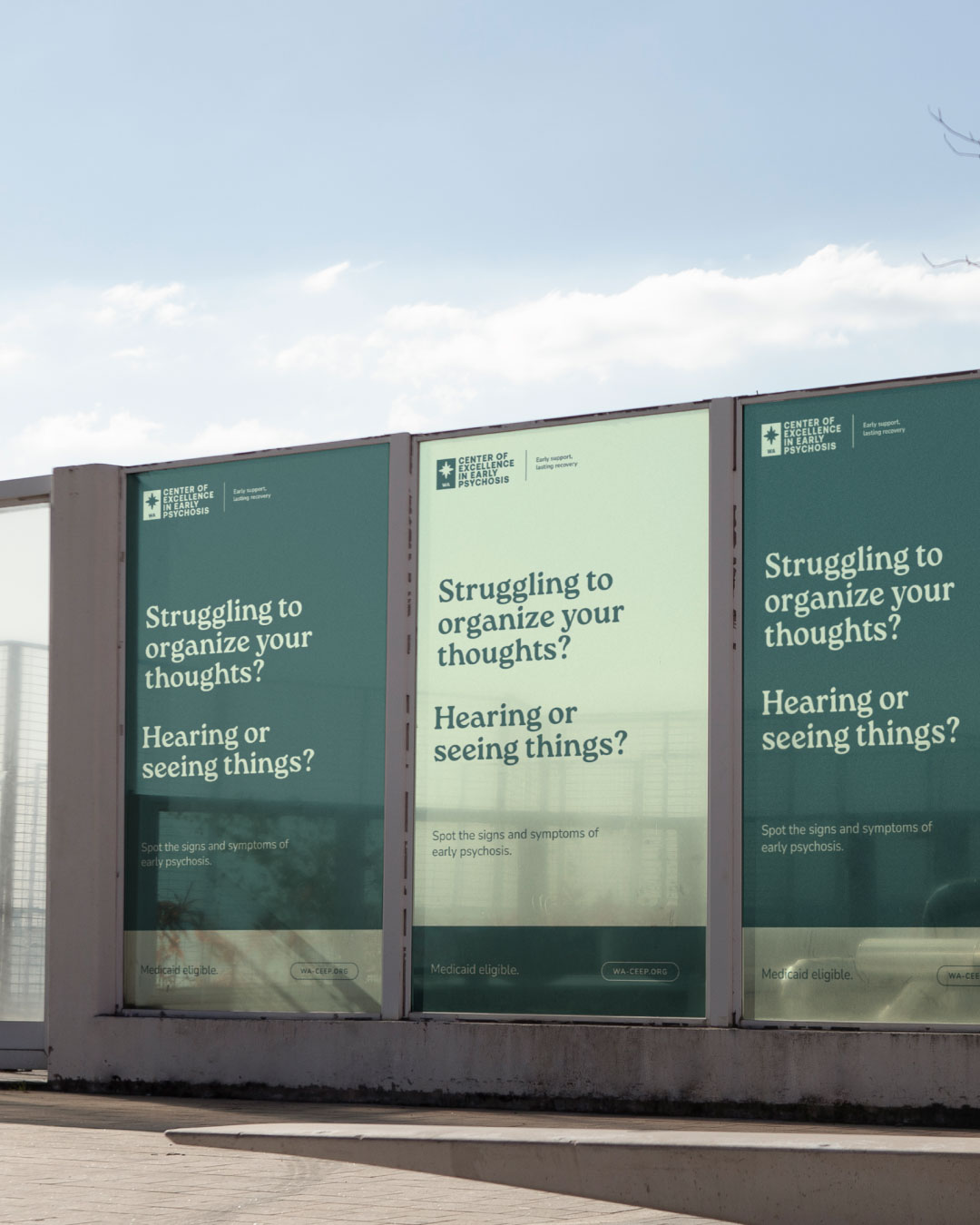
To broaden reach beyond digital, we developed billboard and wheatpaste poster placements across key Washington state communities. These approachable, awareness-driven executions brought the campaign’s core messages into everyday spaces, inviting people to pause and seek help if needed.
The design system created a serene place for people to land—one that felt warm, modern, and approachable. Clean typography, emotionally resonant photography, and thoughtful use of color worked together to support clarity, calm, and trust. The result was a look and feel that centered people, not pathology.
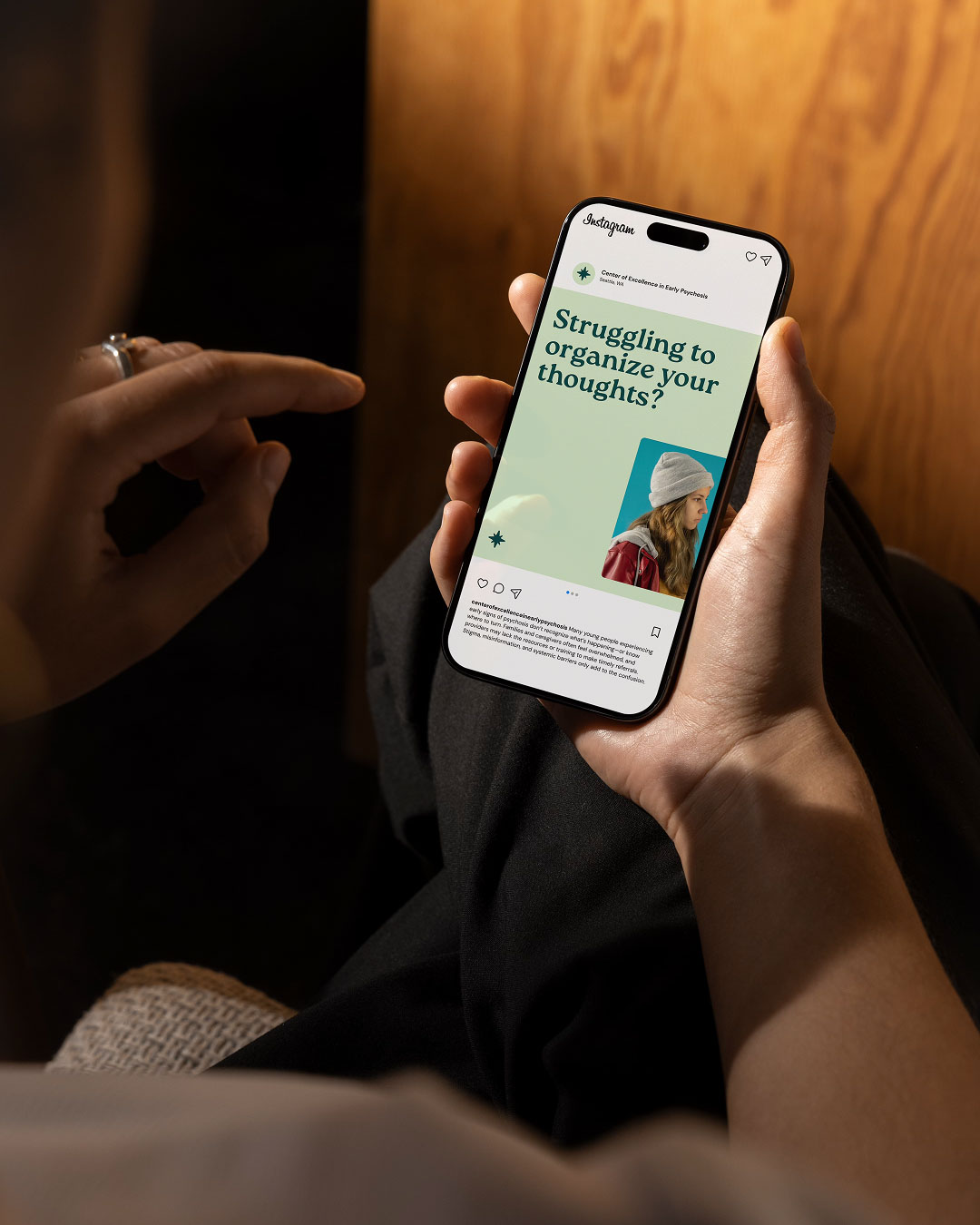
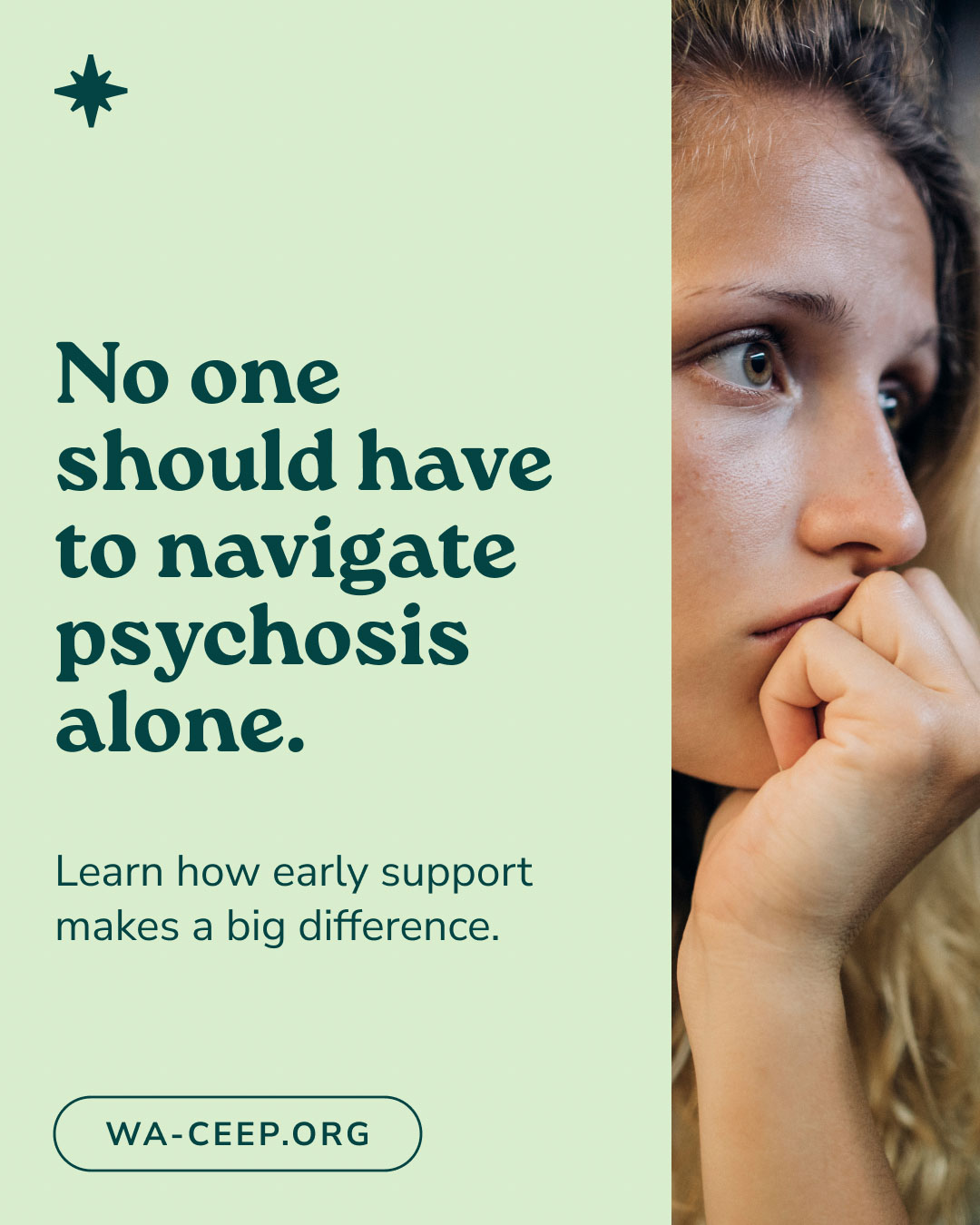
Psychosis is treatable—especially when caught early. But stigma, confusion, and fragmented systems make it hard for people to know where to turn. This campaign aimed to change that by creating a clear, compassionate path to care. By raising awareness, reducing fear, and making tools like the screener more accessible, the campaign sought to encourage earlier action and more hopeful outcomes.